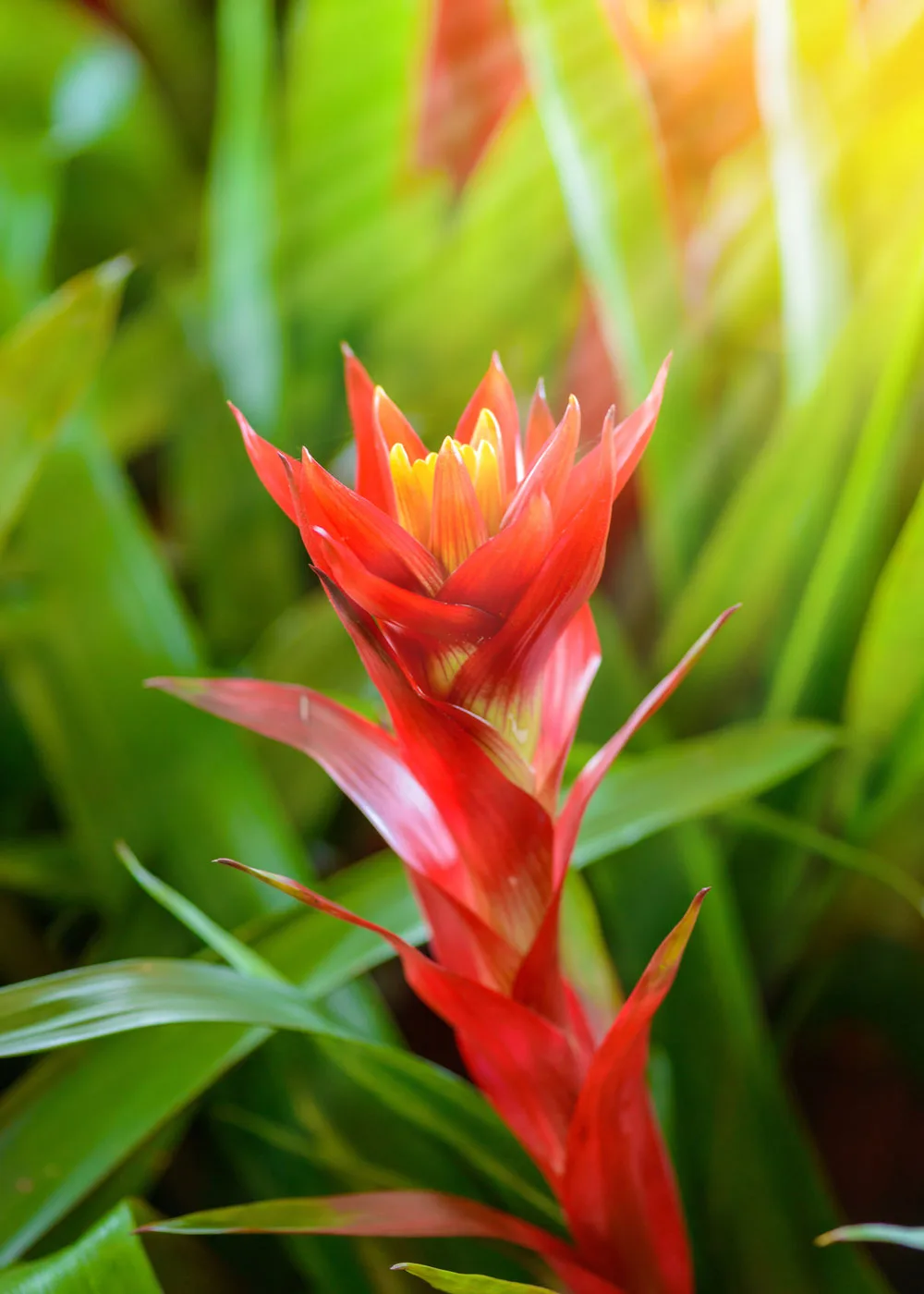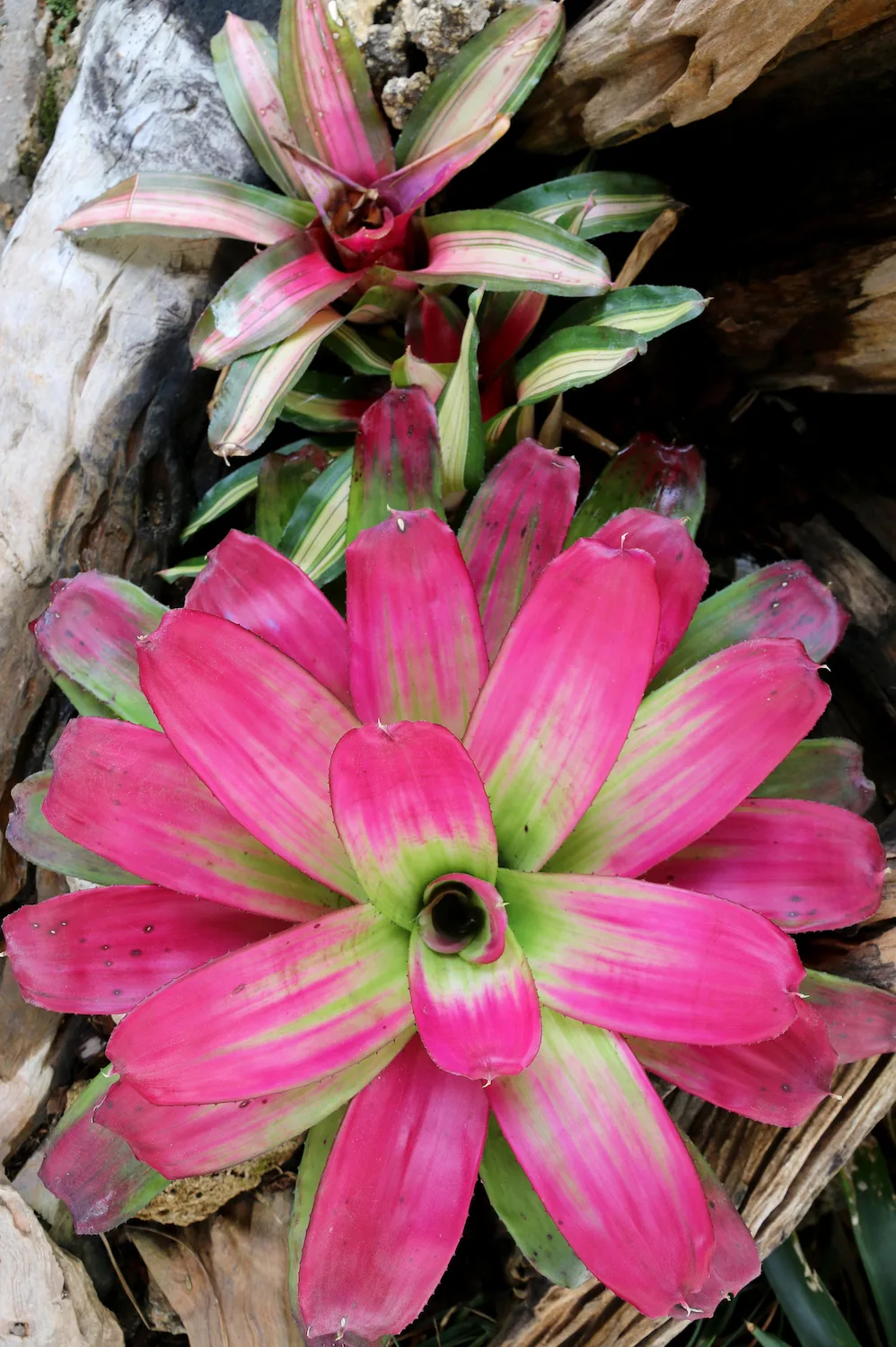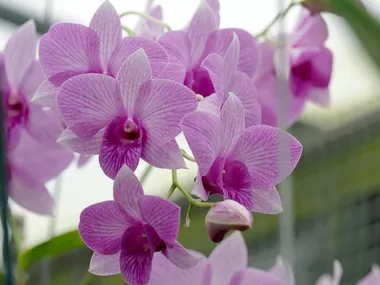Bromeliads have fascinated gardeners and plant lovers since their introduction to the gardening world with many wanting to learn how to grow them.
Bromeliads are hardy, provide year-round interest with their mottled, striped and patterned foliage. They come in many varieties and shapes with long-lasting blooms available in flaming reds, bubblegum pinks and sunshine yellows.
Want to know how to grow and care for bromeliads? Luckily, broms (as they’re affectionately known) are easy to grow and require minimal attention.

How to grow bromeliads
Climate
Bromeliads can be grown both indoors and outdoors in most frost-free areas of Australia. If you do happen to live in a cooler area that is prone to frost, you may find greater success with bromeliads that are planted in pots that can be easily transported inside on cold days.
Water
The majority of bromeliads have their own ‘water tank’ – the cup or vase shape formed where their rosette of leaves comes together. So, when watering the plant, ensure the cup is filled but don’t allow the water to sit for months on end – it should be periodically flushed and replaced with fresh water. Keep the soil moist, but never wet.

Aspect
The name ‘bromeliad’ covers quite a group of different genera and their light needs vary accordingly. Certain varieties can withstand full tropical sun while others will scorch. As a general rule, they flourish in dappled shade or filtered sunlight, but check plant labels to ensure you give your broms the best possible growing conditions.
Fertiliser
In spring, sprinkle a slow-release fertiliser around the base of your bromeliads – this gives them a boost of nutrients during the growing period and improves their condition, so they’re able to cope with the heat in summer.

Soil
Bromeliads are epiphytic, meaning they grow on another plant for support, so are often found growing in trees, on stumps or on other supports. But they will also happily grow in the garden or in pots, as long as you use well-drained or free-draining soil that’s enriched with organic matter. To grow bromeliads in pots, use a free-draining mix such as orchid potting mix. If you wish to grow them in trees or on stumps, place a ball of sphagnum moss around the roots and tie them down with fishing line or jute.
Giant bromeliads
If you’re looking for a brom with wow factor, look out for the Alcantarea. Depending on the species, these beauties can reach up to 2m high and wide. They’re also quite adaptable and can be found growing in shade to full sun. However, they develop their best colour and shape in full sun with afternoon shade.
Do bromeliads grow better in pots or in the ground?
Bromeliads can grow happily in either pots or in the ground as long as they have good drainage. If you opt to grow yours in a pot, make sure to get a well-draining potting mix like that which you would get for succulents or orchids and ensure the pot has enough holes pending its size at the bottom so the water can drain.
Do bromeliads need sun or shade?
Bromeliads love bright, indirect light, both indoors and out. Keep them away from the afternoon sun or it’ll cause their leaves to burn, but don’t keep them in a dark corner, either.
Do bromeliads need to be planted in soil?
Bromeliads are epiphytes and that means that they can grow without soil. They can grow in the branches of other plants or rockeries. Why, you might ask? They have a shallow root system which means they don’t require soil, however if you prefer to use soil then use shallow, free-draining soil.
What do you do with a bromeliad after it blooms?
Once it blooms, chop it off! This will tell the plant to focus more energy on the buds so more will grow.


